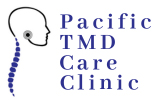In the dynamic realm of oral health, the past few decades have witnessed an unprecedented transformation driven by scientific and technological progress. Nowhere is this evolution more evident than in the understanding and treatment of orofacial pain (OFP) and temporomandibular disorders (TMDs). What was once shrouded in ambiguity and controversy has now emerged into a clearer landscape, thanks to advances in basic and clinical science research (1). This blog article delves into the pivotal role of education in not just preparing dental professionals but in elevating healthcare standards for TMD patients.
The Neuroscience Connection:
Incorporating advancements in neuroscience has fortified the biopsychosocial models for TMD diagnostics and treatment. The conservative treatment approach, prevailing over more invasive surgical options, emerges potential option for patients with mild to moderate TMD. A multi-modal biobehavioral approach, integrating medical, physiotherapeutic, psychological, and dental treatments, promises a holistic solution that addresses the multifaceted nature of TMD, ensuring comprehensive care for patients (2).
Navigating Historical Controversies:
Decades ago, TMDs stirred considerable debate within the dental community, posing ethical challenges to practitioners guided by a code that prioritizes patient interests over personal gain. The American Dental Association’s ethical code, developed years ago, faced a unique test in the context of TMD treatments. However, recent advances have provided a transformative paradigm shift, offering a robust ethical framework for practitioners to navigate the complexities of TMD diagnosis and treatment (3).
Evidence-Based Science: A Beacon for Ethical Practice:
A seminal article underscores the impact of evidence-based science in reshaping the educational landscape for TMDs. This scientific body, accumulated over many years, not only aligns with the ethical code of prioritizing patients’ well-being but also ushers in a new era of conservative and reversible treatments. By embracing a biopsychosocial medical model, dental professionals are equipped to provide quality care, steering clear of unnecessary and potentially harmful interventions rooted in outdated mechanistic models (3).
Revolutionizing Diagnosis: From Oral Structures to the Biopsychosocial Model:
The evolution of TMD diagnosis, from a singular focus on oral structures to the adoption of the Research Diagnostic Criteria for TMD (RDC/TMD) and the Diagnostic Criteria for TMD (DC/TMD), showcases a revolutionary shift. Principles such as a dual-axis system, operationalization for reliability, and allowance for multiple diagnoses have significantly enhanced diagnostic validity. This evolution not only reflects scientific progress but signals a transformation in how healthcare professionals approach and understand TMDs (4).
Conclusion: A Future of Quality Care Through Education:
As we conclude, the crucial role of education in elevating healthcare standards for TMD patients becomes evident. The ethical obligations of healthcare professionals are not merely theoretical; they are deeply embedded in the fabric of evidence-based science and contemporary literature. The journey from historical controversies to the current understanding of TMDs is not just a testament to scientific progress but also a promise for a future where dental professionals, armed with the right education, are well-equipped to provide unparalleled quality care to patients with temporomandibular disorders. This is not just an evolution in education; it’s a revolution in healthcare for those grappling with TMDs.
At Pacific TMD Care Clinic we focus on increasing awareness and we try our best to contribute to this body of knowledge, and circulate the available information within the healthcare community as well as patients with TMD.
References:
1. Klasser, Gary D, and Gremillion A Henry. “Past, Present, and Future of Predoctoral Dental Education in Orofacial Pain and TMDs: A Call for Interprofessional Education.” Journal of Dental Education, 1 July 2012, onlinelibrary.wiley.com/doi/abs/10.1002/j.0022-0337.2013.77.4.tb05485.x.
2. Ohrbach , R., and S. F. Dworkin. “The Evolution of TMD Diagnosis: Past, Present, Future.” Journal of Dental Research, 21 July 2016, journals.sagepub.com/doi/abs/10.1177/00220345166539
3. Gil-Martinez, Alfonso, et al. “Management of Pain in Patients with Temporomandibular Disorder (TMD): Challenges and Solutions.” Journal of Pain Research, 16 Mar. 2018, www.tandfonline.com/doi/full/10.2147/JPR.S127950.
4. Reid, K I, and C S Greene. “Diagnosis and Treatment of Temporomandibular Disorders: An Ethical Analysis of Current Practices.” Journal of Oral Rehabilitation, 22 May 2013, onlinelibrary.wiley.com/doi/abs/10.1111/joor.12067.

